Sonic Adventures (Act 1)
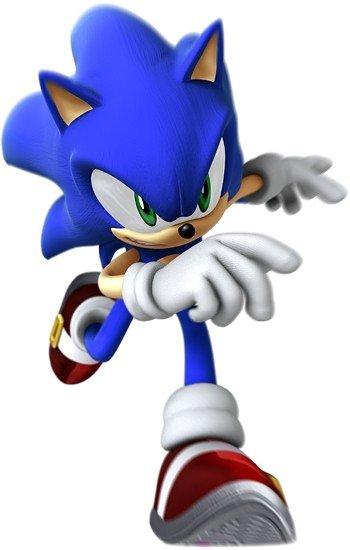 |
The funny thing is, the Sonic The Hedgehog titles aren’t quite my favourite series of videogames. While it would be an exaggeration to say that I’d kill for another Project Zero title, I would probably be willing to maim for it, and events connected to the death of a close relative during my childhood have resulted in me always having a strong attachment to Sega’s NiGHTS character. But seeing the Master System incarnation of Sonic was what persuaded me to take up video games as one of my hobbies (my only previous contact with the medium had been playing Elite), and I’ve followed the character avidly ever since. Since his salad days on the Mega Drive, Sonic’s commercial success has never felt quite as assured as many other long-running series, and given what’s happened to Sega over the last decade, it’s a pleasant surprise that so many creators have been able to keep working on the character continually.
Adding to this feeling is the knowledge of how the unique balancing act that a high-speed platforming ethic requires means that even “proper” fully-fledged Sonic games can easily turn out to be complete rubbish. And I don’t just mean the usual problems that beset high-profile video games being rushed to market in time for the Christmas launch window; you’d be hard-pressed to find a poorer piece of software than the Wii’s Sonic and the Secret Rings. Despite this, the character has that indefinable quality that makes you actively want his ventures to be better than they are. A couple of years ago, an up and coming clothing designer released a collection inspired by the Green Hill Zone, explaining to baffled fashion journalists that she’d made this choice “because Sonic The Hedgehog is the DUDE!”. Part of this is due to the time of the character’s creation. Sonic came into being at a point when video games were finally able to design without technical constraints. Mario wears a hat because his hair never looked right, and sports a moustache to cover the inability of his original hardware to render his nose. At the end of the eighties, years of designer frustration were released, and the result was the most distinctive and well-crafted icon that the medium has yet produced.
Over the years of following Sonic’s exploits, I’ve built up a reasonable level of knowledge of the character, and I occasionally inflict a variety of bits & bobs of trivia about him on those that know me. This habit has lead to a bit of gentle persuasion from NTS’s editorial team, and so over the next few weeks, the site will be presenting the complete history of Sonic The Hedgehog in TOO MUCH DETAIL. My aim is to cover all aspects of the character’s evolution, including the games, the creative direction adopted by Sega, and the licensed products produced, including TV shows, comics, novels- the works. All the opinions that follow are my own. This may sound a rather odd disclaimer, but basically if I don’t pass comment on something I mention, then I haven’t played/watched/eaten it. I have first hand knowledge of most of the character’s history, but there are occasional gaps.
So, that’s the ground rules out of the way. Still here?
Lovely. Let’s go!
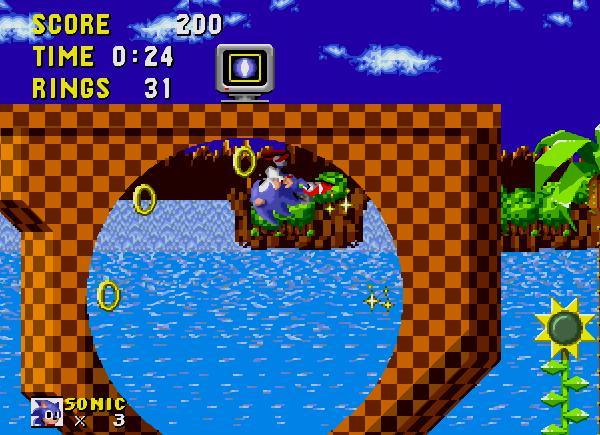 |
The character’s origins begin in a surprisingly cold-blooded fashion, with Sega’s senior staff actively seeking a mascot character which would allow the company to go toe-to-toe with Nintendo for domination of the home console market. The firm had enjoyed a reasonable amount of success with its Mickey Mouse platformers (in the sense of games featuring the character, rather than poor quality efforts), but the need for its own character that could be employed without licensing agreements was obvious. A dedicated development team was formed to work on the title for the firm's new 16-bit hardware. Sonic’s evolution was a gradual process, with early designs being based around a rabbit (for speed) and an armadillo (for the ability to roll into a ball). The organic designing of the character around gameplay elements and the feel of controlling him is perhaps the most important factor in making the hedgehog a complete entity, overcoming the artificial nature of his origins. Many of the prototype designs from this period have since been introduced into the Sonic-verse as separate characters, most noticeably the armadillo concept.
More than any other entertainment medium, video games are a collaborative endeavour, but the credit for the character’s creation has been chiefly apportioned to three gentlemen- designers Naoto Oshima and Hirozaku Yusahara, together with programmer Yuji Naka. It way sound odd to also give credit for character creation to the coder of the title, but this is a consequence of Sonic as we know him being tailored around gameplay elements. Little touches such as the way the rings are scattered when the character takes a hit and the high speed at which he moves would have been impossible without the technical expertise behind him, although Naka regarded his greatest achievement of the game as being the implementation of the rotating special stage, initially believed by many of his colleagues to be impossible.
In addition to the success of the hedgehog’s design and speed of movement, the other key element of the success of the title was the strength of the concepts behind each level, with every location feeling like a real and unique place. While much of this is due to Masato Nakamura’s score, credit must also be given to the level designers for having the discipline to only use certain gameplay tropes in their native environments, with Star Light’s seesaws, the Spring Yard’s moving blocks and the Marble Zone’s volcanic elements meaning that certain actions would only be performed in particular locations. Although the visual design of each area looks rather chunky compared to the more streamlined visuals that would grace later titles, it still does the job of establishing an immediately identifiable setting- you’d never confuse one level for another, and it’s telling that the inclusion of the most obvious level select cheat in history didn’t dampen the title’s appeal. These ‘zones’ were places that gamers actually wanted to visit again and again, not simple challenges to overcome.
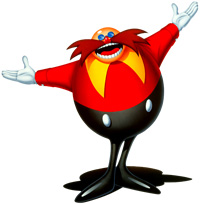 |
The boss encounters at the end of each area added to this impression, with Robotnik usually using one particular aspect of the zone’s architecture in a bid to crush his nemesis. The one exception to this is his deployment of a wrecking ball at the end of the Green Hill Zone, but this wasn’t the designers’ intention. The ball was originally a gameplay element, with a sequence where Sonic would have to run down a hill away from it being cut due to a lack of time in which to hone the code. Sound design is generally strong, helping to make the key connection between the visual appearance of items and their function in the game. Although the ‘ring’ sound effect is not as “pure” as the audio cue used when Mario picks up a coin, it’s more distinctive and memorable. The TVs that Sonic smashed to obtain power-ups are a brilliant piece of visual design, giving a uniform appearance to the items while allowing for the inclusion of a simple indicator of what each does. Although the design of the lampposts wouldn’t really be complete until the second of the core titles, the basic concept is enough, with the idea of something that changes as Sonic runs past it being perfect for a restart point.
The basic battle being fought across the game, with Sonic striving to free various smaller animals imprisoned by the mad scientist, had universal global resonance, being a smash hit for Sega even in the inferior form of the game released in Europe during June 1991. A poor Pal conversion drastically reduced the speed of the title, which shared a number of bugs with the US iteration released on the same day, such as the fact that Sonic will die instantly from contact with spikes instead of simply loosing his rings. A fixed version followed for the Japanese market, but it was in the west that the character quickly showed signs of becoming a phenomenon, and Sega attempted to move quickly to capitalise on the surge in Mega Drive sales.
Although Sega's 8-Bit consoles had sank without trace in the US, they remained a viable proposition in Japan and Europe, and so the adaptation of Sonic to the Master System and Game Gear was undertaken. The work was carried out by an entirely separate team, and released the year after its Mega Drive counterpart. In terms of tone and art direction, Sonic 8-Bit is perhaps best described as "inspired by" the original game, making a number of adjustments including replacing half the levels with new equivalents and intriguingly using a series of maps to chart Sonic’s progress towards Robotnik's hideout. It isn't just the forced simplicity of the game that sets it apart, but a less brash style generally. That said, technical factors result in the gameplay being almost completely different, and the title is effectively a conventional platform game, with the emphasis being on slow and careful movement, with some rote learning of the levels necessary to make progress. It's still a remarkable game for the format at the time, and deservedly sold many copies, but is a very different animal to its big brother.
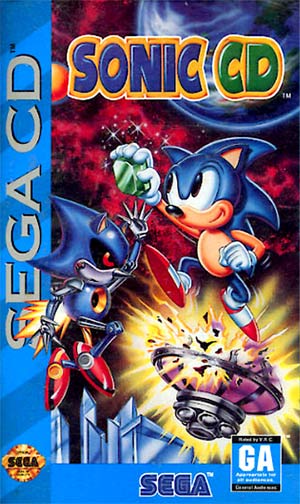 |
For a while, it seemed that Sonic Team proper’s first game would also be their last, with the group splintering to the extent that Yuji Naka actually left Sega. Over the years, there have been many stories of how prickly the creator is to work with, and opinions are divided as to whether it was a lack of status or his salary which had disillusioned the programmer. The particularly acute success of Sonic in the west left the company’s American division in no doubt of the need for a sequel to the breakout hit, and they began attempting to lure Naka to head up development. While these negotiations were ongoing, Sega high-ups decided that they also wished for their unexpectedly successful character to be a selling point for the proposed CD-based add-on for the Mega Drive, and so several members of the original Sonic development team were drafted in to develop Sonic The Hedgehog CD. The resulting game saw another straightforward face-off between Sonic and Robotnik, who this time was attempting to harness the temporal manipulation powers of the “Little Planet” moon that periodically appears in the skies of Sonic’s world. Although the game was released after Sonic 2, it's much more understandable creatively if considered first. Besides which, its plot clearly places it before Naka's true sequel, which left Robotnik marooned on the Floating Island. Although the special mechanics of the story, which saw Robotnik seeking the moon's Time Stones were largely uninspired, the two characters the game introduced have become an indelible part of the franchise. The design of the Metal Sonic that the mad scientist has constructed is simply genius, giving unforgettable life to the concept of a badnik that can counter each of the hedgehog's abilities. Although destroyed at the conclusion of his Stardust Speedway dual with Sonic, no-one believed that we'd seen the last of the robot, and he has duly returned to the series many times. The other inclusion was Sonic’s young female (hedgehog) admirer, Amy Rose. Predictably kidnapped at the start of the story, Sonic’s rescue of the character is an afterthought in the game, with Rose only briefly Rose appearing in the lavishing animated cartoon FMV sequences which bookend the game. These movies are a key part of the title, and for years provided the definitive guidelines as to how Sonic would move when freed from sprite technology.
The game serves as an interesting example of the lack of creative control which was being exerted over the character globally, with the various regions of Sega free to customise the game as the saw fit. The most noticeable example of this is in the soundtrack, which was discarded almost entirely for the US release. The Japanese version has a central theme for each stage, which appears in a remixed form according to the time period the player is located in, but the US version scrapped all of these save for the past music, replacing other tracks with original and completely different compositions. It's fashionable to praise the Jp soundtrack, but in truth both have their strengths, with the western vocal theme a much better effort than the Asian version. The second alteration Sega of America made is much less forgivable. Wishing to capitalise on the cartoon version of the hedgehog created by one of their licensees, Amy was renamed after the older Jessica Rabbit-alike "Princess Sally" found the in DiC animated series. (More of this in a future instalment.) Annoyingly, the character stuck, and has blighted the US incarnation of Sonic ever since. The European release of the game was a mix and match version of the two competing versions, taking the US soundtrack for its PC incarnation, but also retaining Rose.
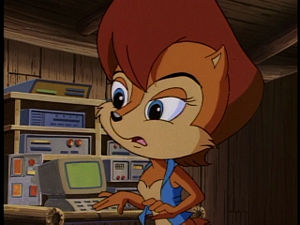 |
In many ways, the game is a parallel sequel to Sonic 2. It took the original game, including its engine and sprite, and tried to expand the gameplay, as opposed to Sonic 2's "bigger and faster" philosophy. Although many fans praise the game as the summit of the series, it’s actually rather weak. The scavenger hunt mechanic doesn't work, with forcing the player to firstly locate a Past Post, then a suitable place for a time run, and finally the two smashable gizmos located in the "past" version of the stage. It's a tedious and unnecessary distraction from the simple joy of movement, and renders the future location completely pointless, as there's no gameplay reason to visit it. Weak level design is the final name in the coffin, with Quartz Quadrant and Wacky Workbench in particular being simply dull to play.
Next Time: Given that I’ve just shown no hesitation in gutting the sacred cow of many old school fans, how will Sonic 2 fare? Plus, a look at how Sega Europe set about bringing the character to life outside of his games.
About this entry
- By Julian Hazeldine
- Posted on Sunday, June 14 2009 @ 6:46 pm
- Categorised in Games, Analysis
- Tagged with sonic the hedgehog, Sonic Adventures, Sega
- 16 comments

This article contains factual errors.
1) “You’d be hard-pressed to find a poorer piece of software that the Wii’s Sonic and the Secret Rings.”
Absolutely wrong, finding a game worse THAN Sonic and the Secret Rings, especially on the Wii, is dead easy. Not to mention that Secret Rings was fairly good for what it was. I’d say you’d be hard-pressed to find a better third party Wii game that was released so early after the Wii’s launch.
2) “shared a number of bugs with the US iteration released on the same day, such as the fact that Sonic will die instantly from contract with spikes instead of simply loosing his rings”
Sonic had a contract with spikes? I hope it was a loose one. :P
There is evidence that this so-called “spike bug” behavior in Sonic 1 was intentional and not a bug. See http://info.sonicretro.org/Spike_Bug
3) “The second alteration Sega of America made is much less forgivable. Feeling that Amy Rose would not appeal to their domestic market, the character was edited out of the game, replaced with the older Jessica Rabbit-alike “Princess Sally”. Annoyingly, the character stuck, and has blighted the US incarnation of Sonic ever since.”
Bullshit. Amy Rose was not edited out of Sonic CD US. Only her name in the game’s printed manual was replaced with Sally’s. Also, this sounds as if Princess Sally was invented for Sonic CD US and had several appearances in following Sonic games. Which is totally wrong again, she was an already existing character from the SatAM cartoon (and Archie comic) and never appeared in any Sonic game, unless you count the minor one in Sonic Spinball.
4) “The European release of the game was a mix and match version of the two competing versions, taking the US soundtrack but also retaining Rose.”
Wrong. It’s common knowledge that the European release of Sonic CD was virtually identical to the Japanese one, music and all. The PC version of the game that appeared a few years later used the the US soundtrack, even in Europe.
Let’s see if your future signals also contain this much noise…
By Needlemouse
June 17, 2009 @ 1:49 am
reply / #
2 revisions you should make. First, Amy Rose appeared in the ending cinematic as sonic rescues her from the final stage, sets her on the planet surface, and runs off before she can thank him.
Also, Amy wasn’t removed from the us release, but her name on the back of the box was simply changed to coincide with the new show, which interestingly enough featured a pink princess sally in the pilot episode.
By steve
June 17, 2009 @ 2:35 am
reply / #
Amazing job in your article. It even had things I didn’t imagined about the blue hedgehog. Keep on the great work! Can’t wait for the next one.
By XSonic
June 17, 2009 @ 3:56 am
reply / #
Good article (despite the minor factual errors). Looking forward to reading more. I’m especially keen to see if you broach the Sonic Adventure Gamebooks, as a child I loved chooseyour-own-adventure books anyway and the fact there were Sonic themed ones available (and good ones at that) really was a delight for me growing up. On a recent trip to my parents I found a load of my old copies that I made sure to snap up. They have brought back some fantastic feelings of nostalgia and I hope this series of articles does the same. Good job.
By Alan
June 17, 2009 @ 12:21 pm
reply / #
Awesome read.
It made me go look up the Japanese theme to Sonic CD which I love so much. Sonic Adventure is still my personal Sonic game to date so I can’t wait to read about that.
Sonic and the Secret Rings wasn’t too bad in my opinion, it could have been a lot worse for his first outing on the Wii. Shame the second incarnation on the Wii appears to be a bit crap. More of Sonic Unleashed without the ‘werehog’ is needed if you ask me.
By Karrakunga
June 17, 2009 @ 8:07 pm
reply / #
A Sonic forum seems to have invaded NTS.
By Jonathan Capps
June 17, 2009 @ 8:29 pm
reply / #
Oooh- Comments!
Needlemouse:
Sorry about the typos, I’ll try not to let any more slip through in future. I’ll be addressing the subject of Sonic and the Secret Rings more fully in one of the later chapters of this article, including why I think it’s rubbish, soundtrack excepted. I tend to subscribe to the view that the spike feature in Sonic 1 was a bug, as it means that they work differently to every other hazard in the game. All other elements either grant invulnerability for a limited period, or kill outright. The one-two punch of the spikes just feels wrong to me…
Regarding Sonic CD, you’re right on the Princess Sally question. I’d forgotten the delay in releasing the game outside of Japan, so the character probably sprang from the minds of DiC before SoA began localising the game. The text has now been corrected. We’re both sort of right on the soundtrack- while the Pal release for the console retained the European score, the PC version which followed included only the US music.
Steve:
I must be getting old- I could have sworn it’s only Sonic and Robotnik who appear in the closing sequence. Oh well, I stand corrected, with the revision duly made.
XSonic:
Why thank you!
Alan:
Thanks! This Sunday’s ‘Act 2’ will cover the choose-your-own-adventure books, together with their big brother, in the form of the Martin Adams titles.
Karakunga:
Ta! We’re a few weeks away from Sonic Adventure, but we’ll get there, never fear.
Jonathan Capps:
You write an article about something, and suddenly people with an interest in the subject turn up. Madness, isn’t it?
By Julian Hazeldine
June 17, 2009 @ 9:16 pm
reply / #
A Sonic forum seems to have invaded NTS.
Ooh, so does a Red Dwarf forum.
By Seb Patrick
June 17, 2009 @ 9:20 pm
reply / #
This is what happens when interesting articles are posted rather than tosh and youtube links.
By Karrakunga
June 17, 2009 @ 9:28 pm
reply / #
Care to give any examples of “tosh”?
By John Hoare
June 17, 2009 @ 9:36 pm
reply / #
Scott, stop talking shit.
By Jonathan Capps
June 17, 2009 @ 10:01 pm
reply / #
Anyway, back on-topic! Although it’s probably embarrassing to anyone who is a Sonic PROFESSIONAL, and can finish the entire game in 22.5 seconds.
On Sonic 1, how common is it to get completely stuck on the Labyrinth Zone, and never get past the fucker? I’m a casual Sonic gamer, obviously - but I wondered if it’s where a lot of people get stuck…
By John Hoare
June 17, 2009 @ 10:08 pm
reply / #
Julian:
I’m sorry if I came across a bit harshly. Nice of you to correct the errors, even though I’m still not happy with some of the rephrased statements. I don’t get how Sally “has blighted the US incarnation of Sonic ever since”, because she’s part of the cartoon/comic universe, which is different and separate from the Sonic games. I guess you’ll explain that in one of the next parts. Also, the new sentence about the European release of Sonic CD is quite a mess. Why not be a bit more verbose for the sake of accuracy? Like, “The initial European release of the game was identical to the Japanese version. However, subsequent rereleases of the game for PC and for Nintendo GameCube have used the US soundtrack.”
Funny that you think that Secret Rings’ soundtrack isn’t rubbish, because although I liked the game, I thought the soundtrack was rather weak except for a few tracks.
Anyway, regardless of those few questionable statements, this is still a nice article. I’m looking forward to reading the next parts.
By Needlemouse
June 17, 2009 @ 11:18 pm
reply / #
> On Sonic 1, how common is it to get completely stuck on the Labyrinth Zone, and never get past the fucker? I’m a casual Sonic gamer, obviously - but I wondered if it’s where a lot of people get stuck…
It’s by far my weakest Zone, definitely. I think it’s because it’s so focused on platforming and has the added dsadvantage of the water element on top of that.
By Jonathan Capps
June 17, 2009 @ 11:24 pm
reply / #
Curious. It seems I’m among the few who actually enjoyed the explorative gameplay mechanics of Sonic CD. Pity.
I consider each stage in the CD game a very meaty maze interconnected between Past, Present, and Future. You start in the Present, and you need to go to the Past to destroy the mechanical doo-hickey and the Metal Sonic projector in order to be awesome. However, you need to be careful about which post you run into and having enough space (or reflex) to hit 88 miles prower and—well, was that two jokes in one? I apologize.
Anyways, I can’t necessarily agree with your statement about the Future Zones serving no gameplay purpose. Of course they do. They’re obstacle zones. They’re the dark, gritty zones of the game you need to get out of to get back on track. It’s fun because it’s different, and it adds depth to each level. They serve as an added element of challenge should you blunder into a Future post and end up careening into the air or bouncing between bounce pads, not to mention give you more to explore as you go running around. Slowing down was never a bad thing with Sonic. That’s just a popular folk myth. Sonic likes to go fast, and that’s why we like Sonic, but that doesn’t mean he’s hopped up on speed. We also enjoy good, challenging, and expansive platformers, and that’s part of what Sonic does best.
I find Sonic CD stands out for it’s surreal presentation and emphasis on speedy and explorative gameplay design that sets itself apart from how the Sonic games we love are designed. May not be the ideal Sonic game, but it’s great for what it is. Plus I dig the weird music in either regional versions.
By the way, cool article; but man, what’s your beef with Sally? She’s a great character. Doesn’t officially belong in the established videogame canon, but she serves as a sweet character in the Archieverse—and that’s coming from someone who’s only seen SatAM and read about two of the comic issues. Having said that, though, she doesn’t replace Amy as a character. Lover perhaps, but not an entire character.
By Treleus
June 18, 2009 @ 3:55 am
reply / #
“On Sonic 1, how common is it to get completely stuck on the Labyrinth Zone, and never get past the fucker? I’m a casual Sonic gamer, obviously - but I wondered if it’s where a lot of people get stuck…”
the continual series of water slopes are pretty tedious, where ya have to make reeeaaally well timed jump movements in order to progress onto a platformed area. otherwise, the fucker just gets repetitive. other than that part though, the game is a fucking classic!
By Lee Soady
August 03, 2009 @ 5:58 am
reply / #